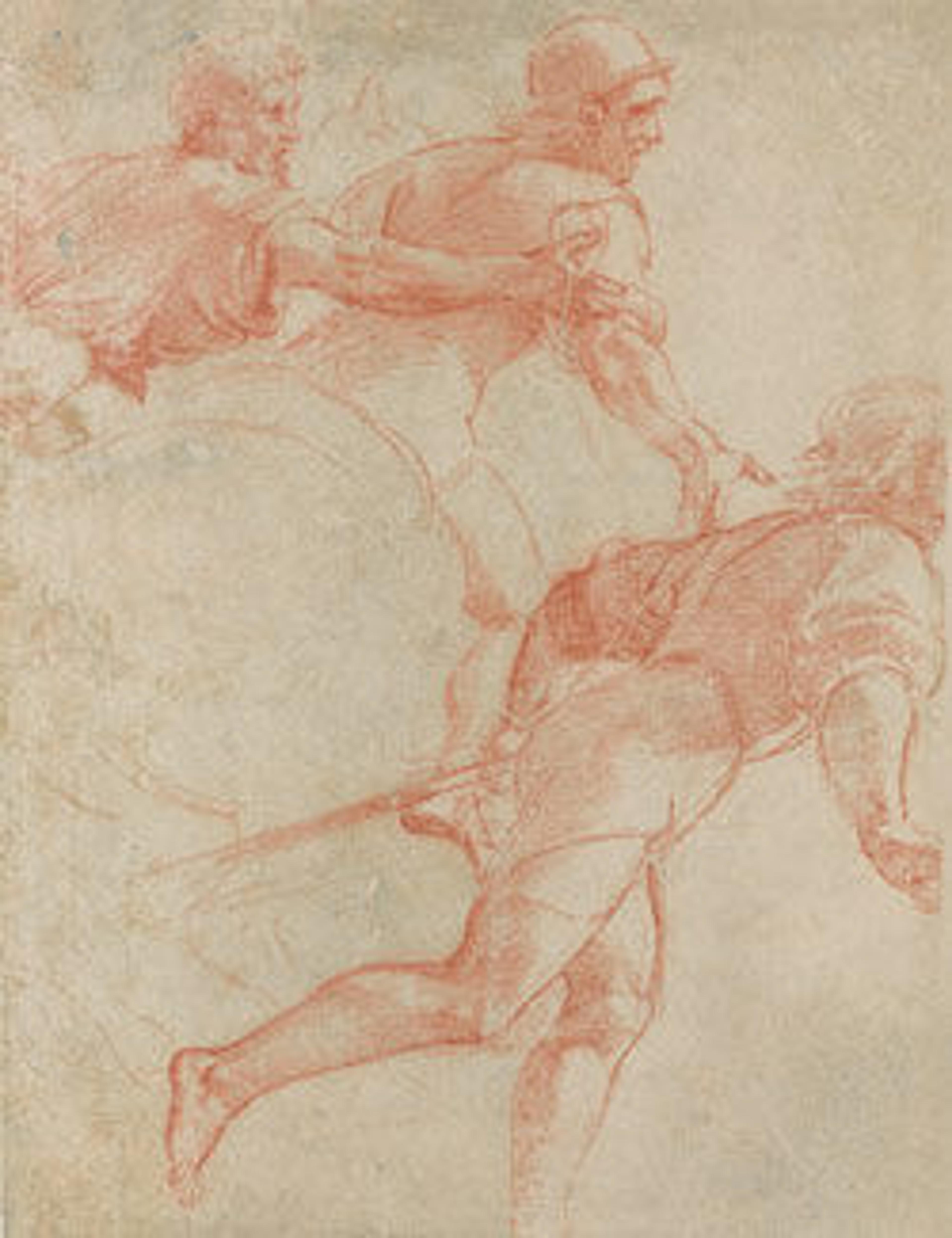Omnia Vincit Amor
This image is a pun derived on a famous line in Virgil's tenth Eclogue, 'Love conquers all.' The Latin word omnia, like the Greek word pan, signifies 'all', while amor, the Latin name for Cupid, means 'love', so that Cupid's victorious combat with the woodland god is a visual translation of the phrase. The engraving was produced around the time that Agostino was assisting his brother Annibale in the decoration of the Farnese Gallery, a fresco cycle that also has as its theme the power of love in the universe. As a key to this meaning, Annibale had painted Cupid's successful wrestling match with Pan on one of the feigned medallions that adorn the Farnese ceiling. The subject was not a new one; it had been part of the fresco decoration of Cardinal Bibbiena's stufetta already in 1516, and had also appeared in sixteenth-century emblem books. Agostino himself had painted the battle between Pan and Cupid nearly a decade earlier in the Palazzo Magnani in Bologna.
What is unusual about Agostino's engraved version of the subject is his inclusion of the two nymphs. The only clue to their identity is provided by the head ornament of the foreground nymph, which resembles that worn by Diana in one of the scenes of the Farnese Gallery. In that episode, we see Diana about to submit to the advances of an enamored Pan, who tempts her with the offer of a beautiful piece of wool. Perhaps it is also Diana, accompanied by one of her nymphs, who appears with Pan in the engraving. The implication would be that once Pan yields to Love, the chaste Diana herself will succumb. This print is the masterpiece of the simplified and monumental manner that Agostino developed in Rome, its popularity evident from the fact that ten other printmakers are known to have copied it.
What is unusual about Agostino's engraved version of the subject is his inclusion of the two nymphs. The only clue to their identity is provided by the head ornament of the foreground nymph, which resembles that worn by Diana in one of the scenes of the Farnese Gallery. In that episode, we see Diana about to submit to the advances of an enamored Pan, who tempts her with the offer of a beautiful piece of wool. Perhaps it is also Diana, accompanied by one of her nymphs, who appears with Pan in the engraving. The implication would be that once Pan yields to Love, the chaste Diana herself will succumb. This print is the masterpiece of the simplified and monumental manner that Agostino developed in Rome, its popularity evident from the fact that ten other printmakers are known to have copied it.
Artwork Details
- Title: Omnia Vincit Amor
- Artist: Agostino Carracci (Italian, Bologna 1557–1602 Parma)
- Date: 1599
- Medium: Engraving
- Dimensions: Plate: 5 × 7 3/8 in. (12.7 × 18.8 cm)
Sheet: 5 1/8 x 7 5/8 in. (13 x 19.3 cm) - Classification: Prints
- Credit Line: Harris Brisbane Dick Fund, 1917
- Object Number: 17.3.1853
- Curatorial Department: Drawings and Prints
More Artwork
Research Resources
The Met provides unparalleled resources for research and welcomes an international community of students and scholars. The Met's Open Access API is where creators and researchers can connect to the The Met collection. Open Access data and public domain images are available for unrestricted commercial and noncommercial use without permission or fee.
To request images under copyright and other restrictions, please use this Image Request form.
Feedback
We continue to research and examine historical and cultural context for objects in The Met collection. If you have comments or questions about this object record, please contact us using the form below. The Museum looks forward to receiving your comments.
